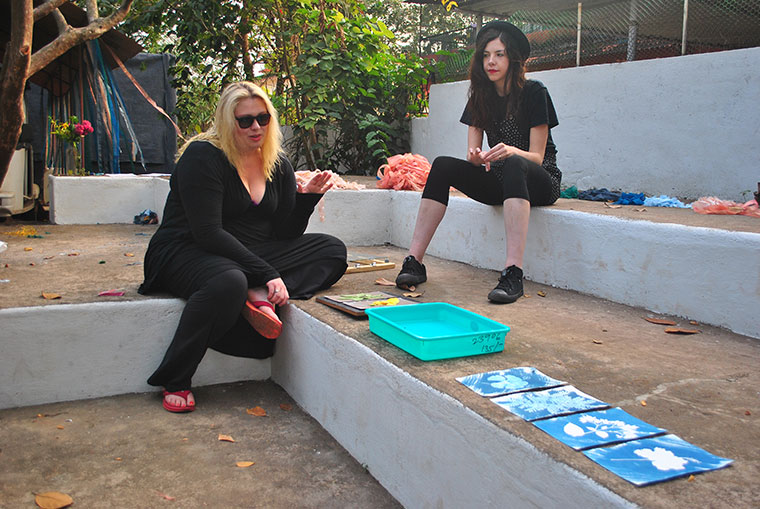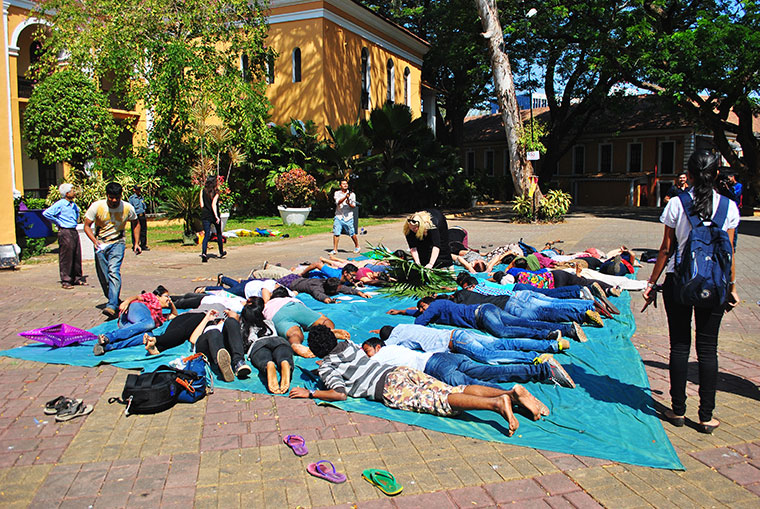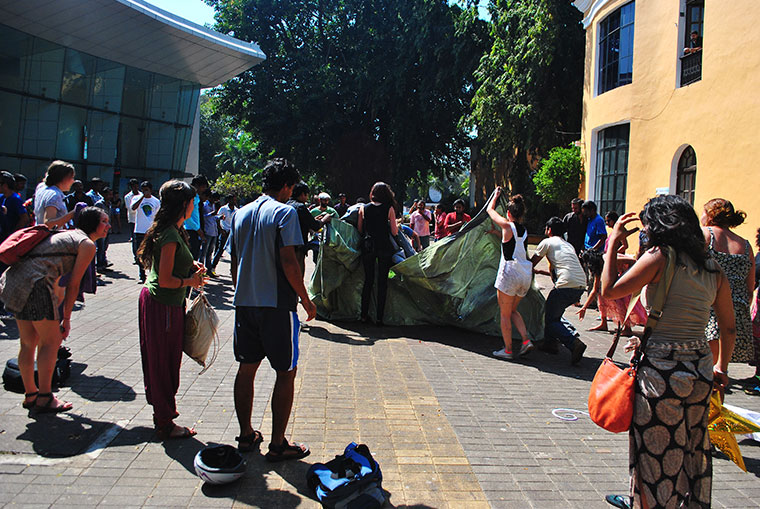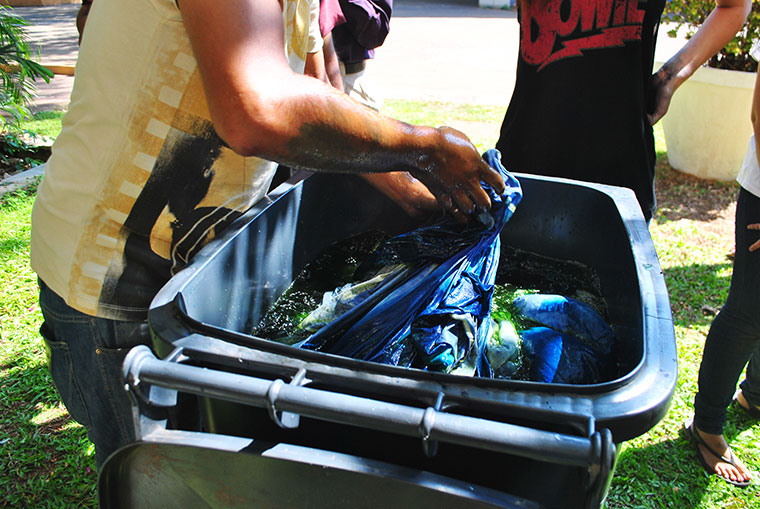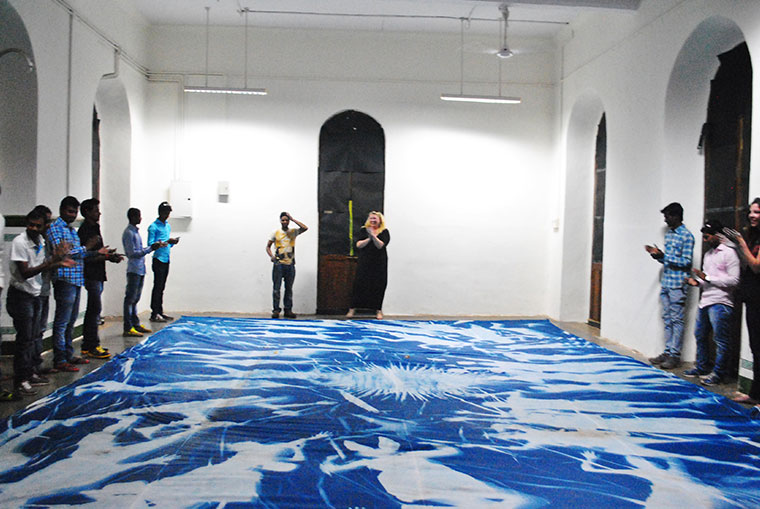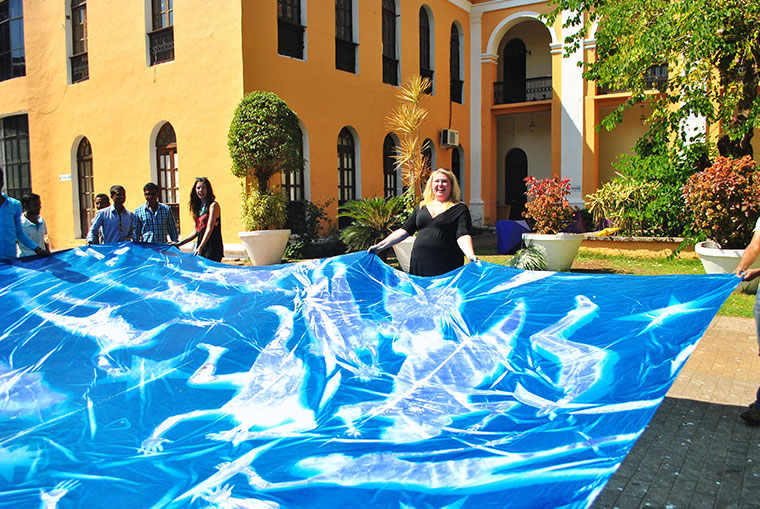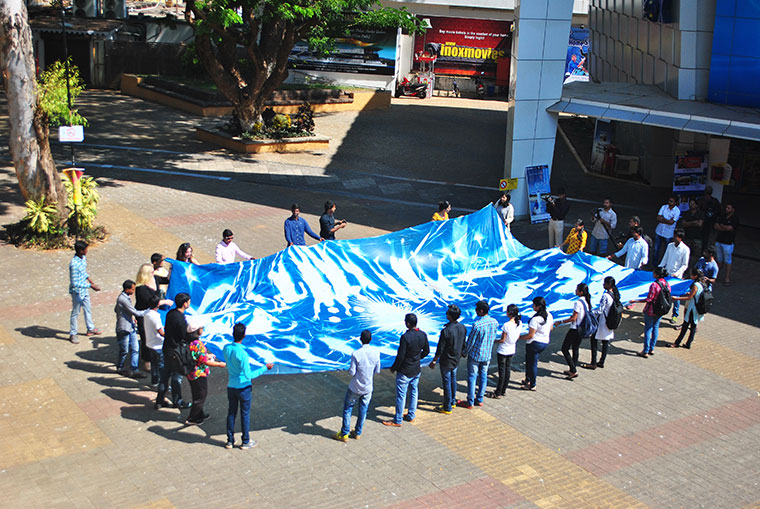Photopoesis
ABOUT THE INSTALLATION
The World’s largest cyanotype was created during the festival with participants lying atop the print. Through this project, the artists explored the beauty of creating visual poetry with light and dwelled upon humanity’s relationship with the universe.
ABOUT THE ARTISTS
Jaden Hastings‘ work is primarily focused upon the intersection and interplay of art and science philosophically, as well as practically, combining scientific and artistic research into a single practice. She is an alumna of New York University, Harvard University and the University of Oxford (New College) with advanced degrees in both Biology and Bioinformatics, respectively. In 2014, J.J. completed the MA (Fine Art) in Art & Science at Central Saint Martins in London. Ms. Hastings’ work is exhibited at public-facing venues such as the Science Museum in London and the London Science Festival, as well as notable galleries in the UK and USA.
Contact: casseopeia7@gmail.com
Melanie King is primarily an artist whose research is heavily influenced by scientific theory. She is an alumna of Central Saint Martins in Fine Art (MA Art & Science) and Leeds College of Art (BA Fine Art). Melanie regularly curates and organises events around London on the subjects of astronomy and analogue photography. Her work has been exhibited widely, including the Edinburgh Science Festival and Manchester Science Festival, has participated in various artist residencies internationally, and has taught numerous alternative photography workshops around the UK.
Contact: melaniekk88@gmail.com
KNOW MORE
The word ‘blueprint’ is overused today, but it’s etymology is sadly unknown. The original blueprint is the cyanotype, a photograph made by a 170 year old photographic printing process that produces the prints in a distinctive dark greenish blue. The word Cyan comes from Greek, meaning ‘dark blue substance’.
The process was invented by Sir John Herschel, a brilliant astronomer and scientist, in 1842, after which a family friend of his, a botanist named Anna Atkins used the cyanotype printing process in 1843 to create an album of algae specimens.
With their luscious, dreamy blue tint, these hauntingly beautiful prints are relatively easy to make and quite inexpensive, needing little equipment.
Photo Credit : Mitwa A.V.

